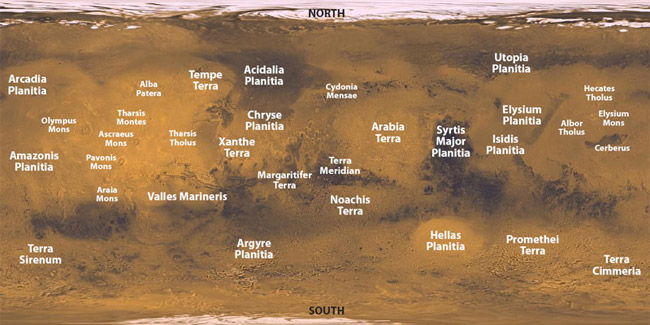Observing Mars
In 2003, Mars made headlines and as it reached opposition. Thousands of people attended viewing nights around the nation to get a glimpse at the planet, which has captured the curiosity of mankind since the dawn of age. Seeing Mars through the 20-inch at Stockport Observatory was certainly memorable as it would occasionally 'snap' into focus, revealing a tremendous amount of surface detail that one could only dream of.
Historically, the opposition of 2003 was so special because Mars would not come so close to our own until the year 2287 -- quite a wait even for the youngest of us!
Oppositions occur every 26 months as Earth catches up to the red planet, passing relatively close to it. During opposition, Mars and the Sun are on directly opposite sides of Earth. Because the two planets are so close, it's the best opportunity to observe Mars. But since our orbits are elliptical and there is a slight 'tilt', the close approach to Earth actually occurrs on 14 April (apparition). However, the difference in the apparent diameter will be negligible and will be favorable for the rest of the month.
The polar caps should be clearly visible through even the smallest of telescopes, whilst larger instruments will reveal some of the more subtle surface detail. Of course, this assumes that the weather is good on both our planets! Dust storms on Mars can quickly engulf the entire planet, dulling its surface.
If you have trouble seeing anything but an orange, featureless disc, then there are a things you should check.
Are the optics of your telescope good quality? Bad optics will never focus sharply and image contrast will always be poor. In a reflecting telescope if the mirror is homemade, has it been tested so that you know if it can perform well?
Collimation, (optical alignment) could be the problem.
Bad seeing (turbulence). If Mars is low in the sky, atmospheric turbulence can obliterate contrast and detail on the planet. Wait for it to gain altitude, say greater than 30 degrees. Sometimes, seeing may be bad even when Mars is high. It depends on atmospheric conditions at the time.
Speaking of turbulence, thermal currents inside the telescope tube will have a similar effect if the telescope is transported from a warm interior to cold outdoors. Allow the scope 1/2 to 1 hour to reach thermal equilibrium outdoors before beginning to search for planetary detail.
Even in an 8-inch telescope with good optics and good seeing conditions, the dusky markings on the planet require some patience and practice to discern especially if you are new to observing. The bright polar cap however should be easily visible.
In a 2.4-inch telescope the most prominent markings, Syrtis Major and the polar cap are visible. In larger apertures Mare Sirenum, Sinus Sabius, Mare Cimmerium and the dark polar hood surrounding the polar cap are visible.
Sometimes a larger aperture performs worse than a smaller aperture under bad seeing conditions. You may have been caught out by this. It depends on the prevailing general seeing conditions in your locality which may be determined by season and the thermal effects of adjacent buildings, asphalt, bodies of water, vegetation and other such factors. You might like to try a 4-inch or 6-inch aperture mask over the top end of the scope to see if this beats the seeing conditions. It might also cure a badly figured homemade mirror if that is the problem.
A red or orange filter will help if the seeing is good to begin with. Otherwise it makes little difference. On a recent occasion an orange filter improved the contrast on Mars in a 31/2-inch Maksutov telescope but made no difference in a 6-inch Newtonian. A filter however, even if it does nothing else, can reduce the 'glariness' of the planet so that it is easier on the eye.
Provided the optics in your telescope are good to begin with, keep on persisting with the above points in mind and you are sure to get a good night when Mars will deliver! As a rule, with good optics, under good seeing conditions, a larger aperture will always outperform a smaller one.
